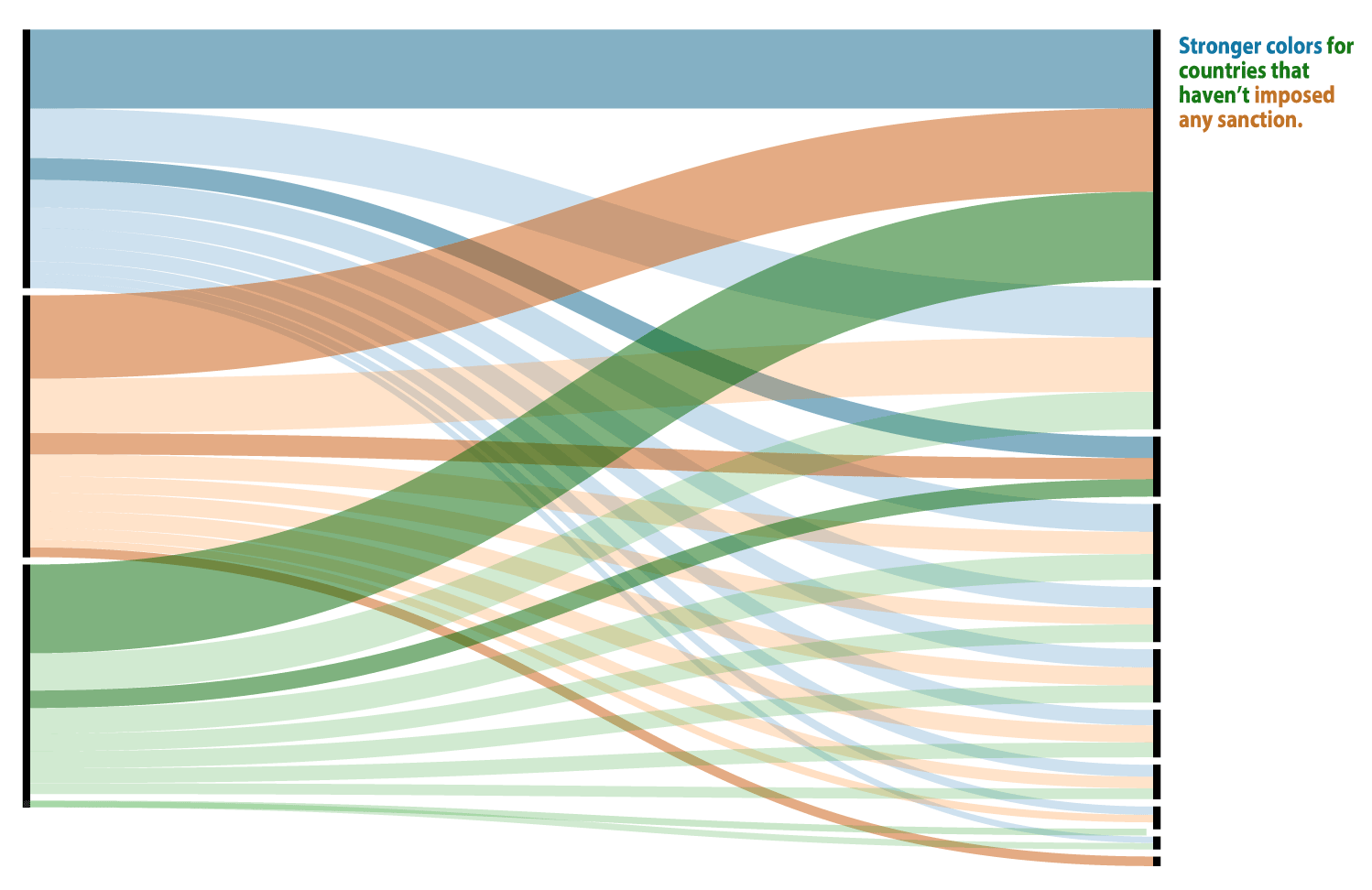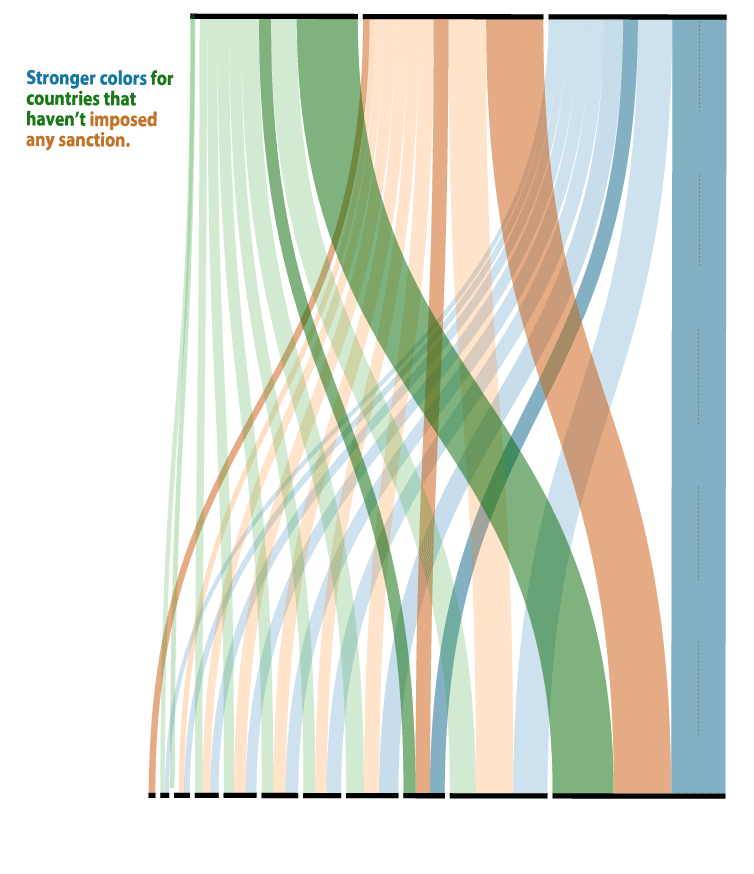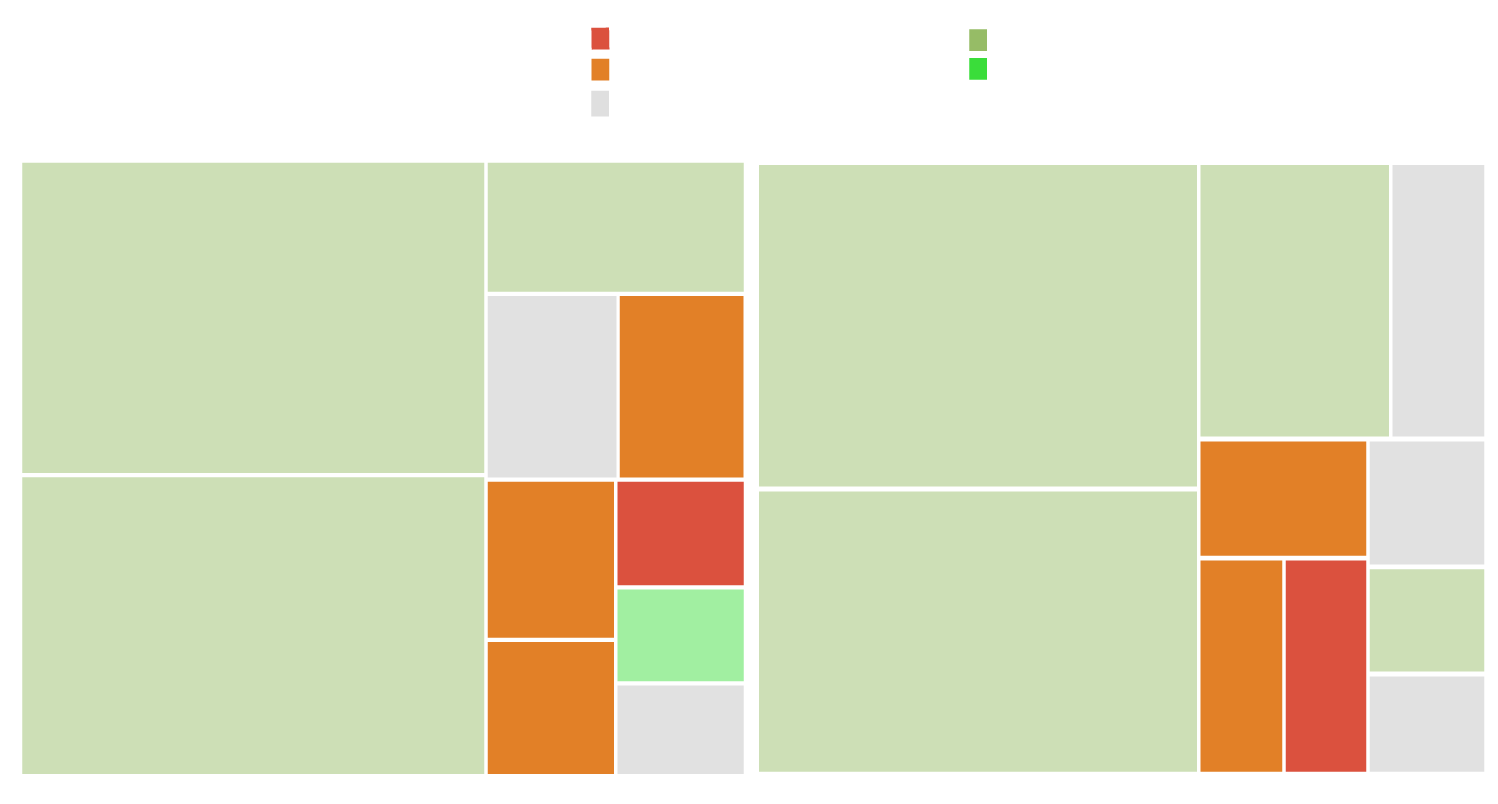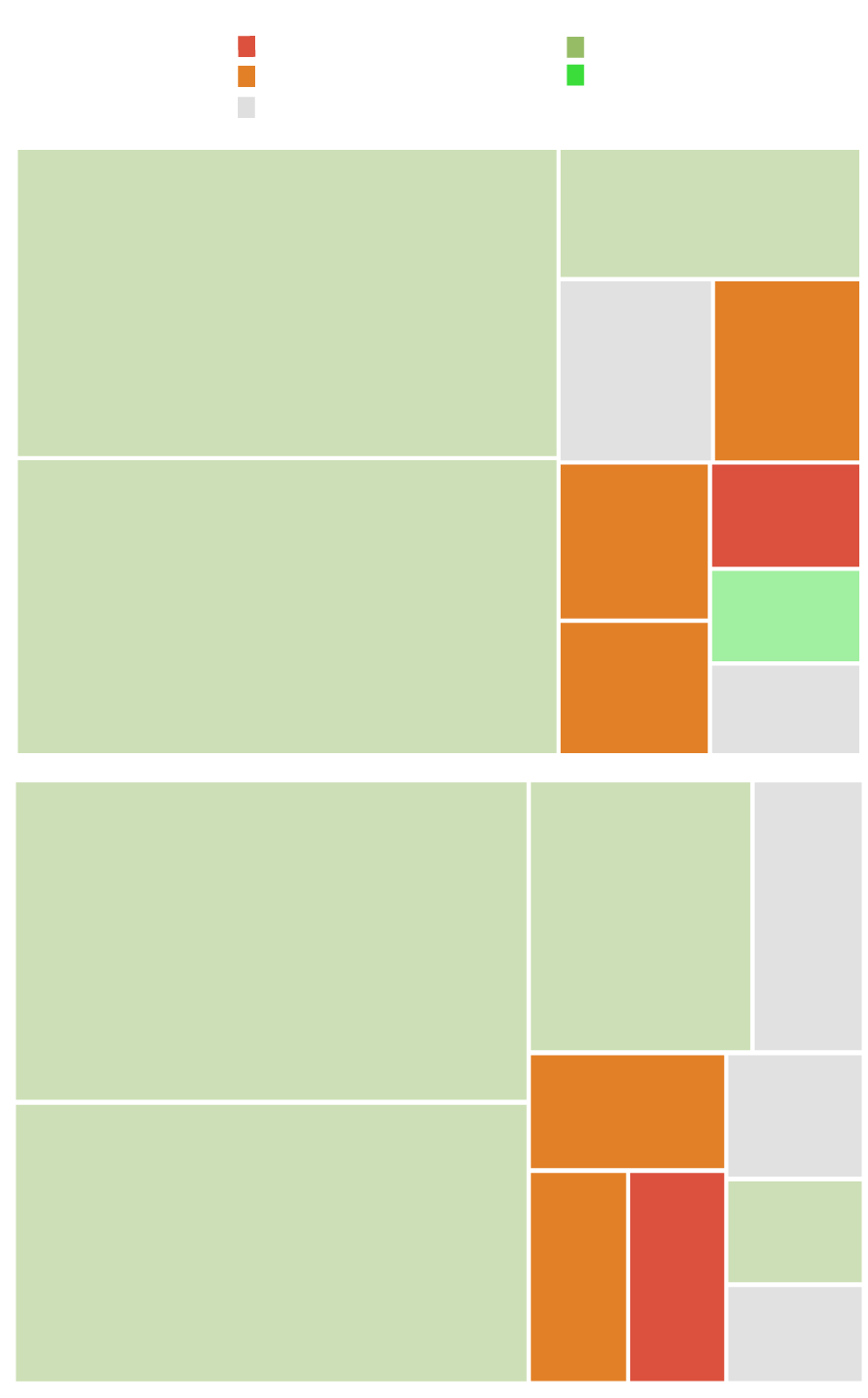Amid a fog of sanctions: tracking down wheat and oil Russian exports
Patricia Martínez Sastre
While U.S. and British bans on Russian oil increase the pressure on Europe to follow suit,
the continent’s dependence on Russia for energy makes an immediate embargo much more difficult.
Nevertheless, just US and British oil sanction can't be really effective by themselves, as most Russian
oil goes to China and European nations.
If we look at recent data, China is the top country to which Russia exports petrol: more than 1.5 million barrels per day
in 2020, according to data from UN Comtrate. The Netherlands sums the second largest figure (640,000 barrels per day), followed closely by Germany.
Dutch Prime minister Mark Rutte has rejected calls for a ban because it would have ‘enormous consequences’, a vision shared by
German Chancellor Olaf Scholz.
4.8 million barrels per day, where does Russia’s oil go?
Countries not backing sanctions against Russia add up 1.9 million

China
2018
more than 1.5 million
barrels per day
Netherlands
640,000
barrels/day
2019
297,000
Belarus
barrels/day
Germany
Poland
300,000
barrels/day
Rep. of Korea
2020
Italy
186,000
Finland
barrels/day
Japan
Slovakia
Turkey

2020
2019
2018
Rep. of Korea
Netherlands
Germany
Slovakia
Belarus
Finland
Poland
Turkey
China
Japan
Italy
over 1.5 million
barrels per day
186,000
297,000
640,000
300,000

China
2018
more than 1.5 million
barrels per day
Netherlands
640,000
barrels/day
2019
297,000
Belarus
barrels/day
Germany
Poland
300,000
barrels/day
Rep. of Korea
2020
Italy
186,000
Finland
barrels/day
Japan
Slovakia
Turkey

2020
2019
2018
Rep. of Korea
Netherlands
Germany
Slovakia
Belarus
Finland
Poland
Turkey
China
Japan
Italy
over 1.5 million
barrels per day
186,000
297,000
640,000
300,000
“Europe has deliberately exempted energy supplies from Russia from sanctions," Scholz said in a statement, adding: "At the moment,
Europe's supply of energy for heat generation, mobility, power supply and industry cannot be secured in any other way".
Belarus, the third most important partner and Russia's ally hasn't backed any sanction. On the contrary, the European Union
has effectively banned about 70% of all imports from that country, the EU said on Wednesday.
Disruption of Russian wheat exports could hit Yemen, Sudan
Concerns are also growing across the Middle East, North and Central Africa that the war in Ukraine will send prices of staple foods soaring as
wheat supplies are hit, potentially fuelling unrest. Russia and Ukraine supply a quarter of the world’s wheat exports, while Egypt is the world’s
biggest importer of wheat.
Looking at data from the UN Comtrade dataset, Turkey and Egypt are the nations where Russia exports most of its wheat, with over 8 million metric
tonnes and 7.9M, respectively, in 2020. There are also smaller nations like Yemen that buy less wheat, but where its disruption could have severe
consequences on their populations well-being.
The war will worsen food insecurity in vulnerable
countries like Yemen, Nigeria
Top 10 nations where Russia exports most of its wheat

Very High above (40%)
Prevalence of insufficient
food consumption
Moderately Low (10% - 20%)
Low (5% - 10%)
Moderately High (20% - 30%)
Not reported
2020
2019
Bangladesh
Azerbaijan
1,94
Turkey
Bangladesh
Egypt
7,03
2,58
1,28
8,25
million metric tonnes
Azerbaijan
Sudan
1,38
1,33
United Arab
Sudan
Emirates
Yemen
986,95
736,156
Pakistan
796,10
1,17
Viet Nam
Tanzania
Egypt
Turkey
604,543
700,911
Nigeria
Yemen
6,13
Nigeria
7,90
880,507
894,72
United Arab
Latvia
998,13
Emirates
578,806
674,558

Prevalence of
insufficient food
consumption
Very High above (40%)
Moderately Low (10% - 20%)
Moderately High (20% - 30%)
Low (5% - 10%)
Not reported
2020
Bangladesh
1,94
Egypt
8,25 million metric tonnes
Azerbaijan
Sudan
1,38
1,33
Yemen
Pakistan
796,10
1,17
Tanzania
Turkey
700,911
Nigeria
7,90
United Arab
998,13
Emirates
674,558
2019
Azerbaijan
Turkey
Bangladesh
7,03
2,58
1,28
United Arab
Sudan
Emirates
986,95
736,156
Viet Nam
Egypt
604,543
Nigeria
Yemen
6,13
894,72
880,507
Latvia
578,806

Very High above (40%)
Prevalence of insufficient
food consumption
Moderately Low (10% - 20%)
Low (5% - 10%)
Moderately High (20% - 30%)
Not reported
2020
2019
Bangladesh
Azerbaijan
1,94
Turkey
Bangladesh
Egypt
7,03
2,58
1,28
8,25
million metric tonnes
Azerbaijan
Sudan
1,38
1,33
United Arab
Sudan
Emirates
Yemen
986,95
736,156
Pakistan
796,10
1,17
Viet Nam
Tanzania
Egypt
Turkey
604,543
700,911
Nigeria
Yemen
6,13
Nigeria
7,90
880,507
894,72
United Arab
Latvia
998,13
Emirates
578,806
674,558

Prevalence of
insufficient food
consumption
Very High above (40%)
Moderately Low (10% - 20%)
Moderately High (20% - 30%)
Low (5% - 10%)
Not reported
2020
Bangladesh
1,94
Egypt
8,25 million metric tonnes
Azerbaijan
Sudan
1,38
1,33
Yemen
Pakistan
796,10
1,17
Tanzania
Turkey
700,911
Nigeria
7,90
United Arab
998,13
Emirates
674,558
2019
Azerbaijan
Turkey
Bangladesh
7,03
2,58
1,28
United Arab
Sudan
Emirates
986,95
736,156
Viet Nam
Egypt
604,543
Nigeria
Yemen
6,13
894,72
880,507
Latvia
578,806
More than a third of the wheat Yemen consumes comes from Russia and Ukraine. The country has been ravaged by war since 2014, and a simple staple
like bread makes up over half of the calorie intake for the average household. According to the World Food Programme (WFP) estimations on food insecurity,
there are four countries heavily dependent on Russian wheat where insufficient food consumption affects at least 20% of their population.
That is the current situation in Sudan, Nigeria and Pakistan, all on them reliant on Russian and Ukranian wheat. In the case of Yemen, more than 40% of its
almost 30 million inhabitants already suffer food scarcity. A sudden rise on the price of this essential commodity could have a devastating effect.